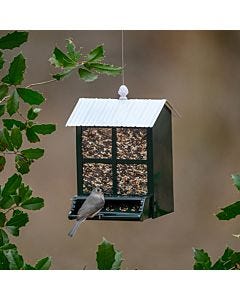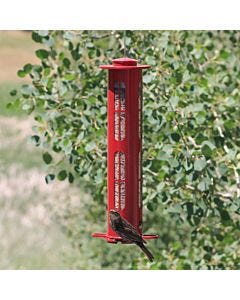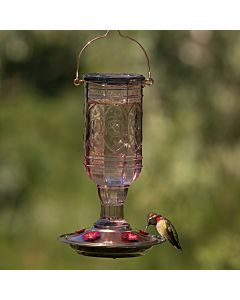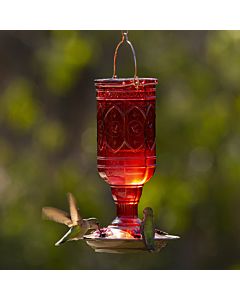BIRD MIGRATION FACTS
BIRD WATCHING 101 »
When do Birds Migrate?
In North America, the birds that migrate do so in the late summer through the fall and in the late winter through the spring. Migrations generally follow a north-south pathway, although a few bird species – namely oceanic birds -- may migrate in a circular pattern.
Fall Migration Timing
With so many bird species migrating to and from North America, it’s impossible to pin down exact dates for bird migration. Most bird species have huge summer ranges, so saying that all White-throated Sparrows begin migration around September 10 would be misleading. Why? Their summer range includes millions of acres in Canada. So, does their migration officially start when they exit the southern border of that range? Or does migration simply begin when they start flying south?
Instead, it’s easiest to suggest that fall migration departures begin in waves starting in the northern latitudes of Canada in the late summer and continue through the fall.
Just like fall migration, spring bird migration times are rarely exact dates. Instead, their departure dates often revolve around weather conditions, food availability, and steadily increasing competition for resources. There are probably many other migration triggers – we humans just haven’t recognized them yet!
Since it’s so hard to provide exact dates, we have developed this helpful map featuring various zones and key time periods for spring and fall migration.


Migration Hotspots
Most birds will follow landmasses as they move through their migration routes. This instinct often creates hotspots in the U.S. and Canada where a huge variety of species are funneled through a very small area.
That means that peninsulas and barrier islands are frequent favorites of bird watchers during migration. Additional hotspots pop up as birds search for water during their long trips. This activity creates bird-viewing opportunities at lakes, marshes and rivers. Another North American hotspot occurs along the southern coasts of the U.S. Birds congregate there to get rest and food prior to continuing across the Gulf of Mexico or to recover after crossing it.
For backyard birders lucky enough to live near one of these hotspots, their feeders can be buzzing with activity as birds pass through!
Do All Birds Migrate?
A large portion of the bird species in North America migrate in the spring and fall, but not all of them do.
Those that migrate will travel to their seasonal range, which, in some cases, can be thousands of miles away. These journeys can be long and exhausting for the birds that undertake them. That explains why birds spend so much of their time building energy reserves before engaging in their migration. Without those reserves, they wouldn’t be able to travel as far as they do -- or arrive in relatively good shape!
Other migration journeys may only be a few hundred miles – just enough to escape a harsh winter or to move toward more ideal nesting ground. Other species will simply migrate to a different altitude – in the winter they leave their mountaintop territories to live in valleys that offer better shelter from the winter cold and access to more food.
Depending on your specific location, these short-distance migrants may be considered resident birds. A species can be labeled a year-round resident of your area, but a migrant elsewhere on the continent. But who’s to say the Northern Cardinal in your area didn’t travel 500 miles south in the fall to avoid a tough winter? If it travels back to that area in the spring, then it’s definitely migrating!
With that in mind, remember that the definition of what a migratory bird is should be considered highly fluid. As an avid bird feeding enthusiast, don’t worry about it much – just remember to keep your feeders and waterers stocked during the key migration periods in your area!
Quick Facts on Bird Migration by Species

Robin Migration
The arrival of American Robins is always a welcome sign of spring! But in fact, American Robins are considered year-round residents in most of the United States. Yes, some do show up in Mexico in the winter, but generally, your robins are still lingering somewhere nearby! They just know enough not to be looking for worms in your snow-covered yard.

Purple Martin Migration
Known for their flocking behavior when nesting, Purple Martins don’t have any interest in weathering a North American winter! They spend their winters in South America – mostly Brazil.

Oriole Migration
There are about a dozen orioles that spend their summers in the U.S. and southern Canada. These fruit- and berry-loving birds will fly south after their primary food sources disappear – often in early August. They return from Central America in the late spring.

Bluebird Migration
If you live south of the Mason-Dixon Line, chances are you’ll see Eastern Bluebirds all year long. North of that, Eastern Bluebird migration is a fact of life. These bright blue beauties are short-distance migrants and are content with southern winters. Western Bluebirds and Mountain Bluebirds are also short-distance migratory birds.

Goldfinch Migration
For much of the U.S., American Goldfinches are year-round resident birds. The extreme southern U.S., however, tends to only see these yellow birds in the winter. As for their summer-only ranges, southern Canada and the Plains States will see these birds from late spring to early fall.

Red-Winged Blackbird Migration
Most Americans can see Red-winged Blackbirds all year long, thanks to their year-round range that includes much of the contiguous United States. Canadian bird lovers will only see them during the summer months. Winter flocks of Red-wings can number in the millions of birds – the birds form these flocks at night and then spread out over a 50-mile range in the day to feed.

Mourning Dove Migration
Mourning Doves are a common sight on the ground underneath bird feeders. These pigeon-like birds have a year-round range that includes nearly all of the U.S. and Mexico. Canadians and those in the Plains States will see Mourning Doves in the summer only.








